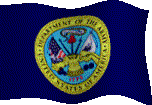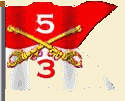Charlie Horse History Forward
follow it down into the canyon. When Angotti flared to slow the forward airspeed, flames engulfed the cockpit and he lost sight of the river bank. They hit hard and rolled over on the left side at grid XD883408. Exiting the burning wreckage, AK-47 fire could be clearly heard as the NVA shot down into the river. The DG, PFC David Berdahl, and one of the Blues, SP4 Harry Edwards, were killed in the crash.
These two were declared MIA and later BNR. However, in 1985 SP4 Edwards’ status was changed to RR (Remains Returned). CPT Hogg having followed the burning Huey to the bottom of the canyon, elected to turn his aircraft over to his co-pilot while he and an on-board RTO from Operations, Bob Weiland, exited the Huey at a hover. They forded the river to helped extract the wounded and burned from the wreck. All the while being shot at from above by the NVA. The two Cobra Guns suppressed as much AA as they could and covered the Huey on the river bank. Loading the surviving crew and the badly burned ARPs onto the C&C Huey, they made their exit out of the canyon. The burned survivors were later evacuated to the burn ward at Camp Zama, Japan. The two badly burned Blues SP5 Fernando Figueroa and SP4 Walter Moran would both perish days later from their injuries and burns. Moran on the 23rd and Figueroa on the 24th. CPT Bill Allen and WO Frank Angotti were in the burn ward system and survived. The CE, Walter Morris, survived but lose a leg. The last Infantry man, Dennis Trimble, had jumped from the burning Huey as it passed over the river. He suffered a broken leg but survived the ordeal. This was the last incident in Charlie Horse that included KIAs.
30 Jan 1972
CPT Hugh Mills lost a tail rotor north of FSB Fuller resulting in a hard-forced landing with the loss of the Cobra. Both Mills and his front seat, John Bryant, were WIA. They were recovered by a Charlie Horse Huey.
6 Feb 1972
Charlie Horse was operating out of Camp Eagle at Phu Bai and was still OPCON to the 101st. [The 101st’s official departure date was 10 Mar 1972.] The absence of any back-up was still evident, but the Troop was still operating under the direction of BG Hill.
Arriving at the Charlie Horse TOC at 0500, CPT Hogg, now the Troop Operations Officer, but suspended from flying due to the injuries he had sustained in the recovery effort ten days previously, was preparing for another day of foul weather and limited mission assignments due to the limited visibility. A planned daily flight to Da Nang was scheduled. A stand-by Huey was to be pre-flighted and dispatched at a time dependent on the weather.
At 0600, a radio call from the 101st TOC directed Charlie Horse to execute a medevac mission to FSB Bastogne in the northern A Shau Valley. Multiple casualties were reported, and the request was urgent.
A newly assigned WO was in the TOC and on his way to preflight the Huey for the Da Nang ash and trash mission. He was going along with the “Bagger” Platoon Leader who was to meet him in the revetments shortly. CPT Hogg informed the WO that his mission had changed. They would be doing the medivac just ordered by the 101st. He was directed to hurry down to the flight line and prepare the Huey and crew for the medevac mission.
At 0620, CPT Hogg received a landline call from BG Hill wanting to know why that mission hadn’t launched. He was ordered by BG Hill to, “Get your ass down to that helicopter and get out there.” CPT Hogg ran down to the flight line only to discover that the scheduled AC had elected to postpone the ash and trash mission and wait on the weather to improve. He had not come to the flight line and had no idea of the mission change. Borrowing a flight helmet, CPT Hogg and the crew climbed into the Huey and took off in the direction of the FSB Bastogne.
The ceiling at Phu Bai was described as 100’ AGL, solid up to 3000’, dark, drizzling and with no wind. Two minutes into the mission, with the ground rising in the western hills and with the ceiling closing in ~ they were in solid clouds. CPT Hogg described it as hovering at the speed of a fast walk. Following the stream beds and hovering at treetop level, so low and slow that the instruments were useless. Having a Standard Instrument Ticket didn’t improve the chances of success! To their surprise, 45 minutes into the flight and thinking they were lost; they found themselves directly over the FSB.
There were so many WIA that two KIAs had to be strapped into the DG and CE seats. Then they had to sit on their laps all the way back to Phu Bai. Back at Phu Bai they were met by two medevac choppers. The wounded and dead were transferred. As it turned out, the medevac choppers had attempted the mission using VFR on Top. However, they were unable to locate the FSB in the cloud covered hills.
Within the following week after this last significant mission, Charlie Horse received orders to ‘Stand Down.’ It is ironic that the last mission the Troop performed was a mission of mercy, a Medevac. After the eighteen months of combat, the last award to a Charlie Horse Trooper, was the “Soldier’s Medal,” the highest award given for a non-combat action. It was presented to CPT Joe Hogg
Personal Recollections of 1LT Tom Bell:
Our third and final move was from Camp Eagle to Red Beach at Da Nang for the ‘Stand Down.’ I recall not long after the move, we were just turning stuff and people in. I had been in-country 10 plus month by that time, so I knew I’d be going Home. Some of our ‘newer friends’ didn’t have enough time, so they were sent to other units. The one I remember most of LT Lou Breuer. He went down south to the 1/9th and was KIA a few months later. The most memorable thing for me was when we had to turn in all our weapons and ammo. I felt completely NAKED! My parting gift to Charlie Horse was, however, SPECIAL. Some time prior to this I had acquired a case of AK-47s – maybe from the P/75th Rangers. Anyway, I traded it to the Air Force guys for enough Champagne for a fine PARTY!
Conclusion
This concludes history of Charlie Horse’s odyssey in I Corps. Both as C/3/17 and later as D/3/5 Air Cav, the Troop’s operations were always tied to LS 719. Within these pages are not all the forced landings or all the shoot down experienced by the Troop during the 18- months it spent in I Corps. Only the incidents when there was injury or loss of life are described here. Events listed, and those not listed, impacted so many of the Charlie Horse Troopers for the rest of their lives.
In conversations with members of the Troop at the occasional gathering since the war, I had one of the Huey AC remarked to me that he had kept a diary. He was involved in 13 crew recoveries during his tour with Charlie Horse. However, he had spent less than an entire tour having been medevaced prior to completing his twelfth. One of the Cobra AC’s and a Team Leader had chronicled 28 Troop helicopters either shot down or forced to land in just the Teams he was a part of. And he rotated out in July of 71! Certainly not all helicopters shot down or forced down were destroyed, many were recovered but not most.
Be it the preliminary recon for the coming operation, holding against elements of the 304th or the 308th NVA Divisions in defense of Khe Sanh alongside the 3/5 Cav, or covering the withdrawal of the American units departing south or standing down, the shadow of the LS 719 never departed. With the Stand Down complete, MAJ Joe Seery, Charlie Horse 6, folded the Guidon and put it away, to await the next bugle call when new Troopers will answer to it.
It was strange to the veterans of that tour, no matter what portion of the 18 months you lived it, to never see mention of the Troop in any publication or report. It was if we were never there. It wasn’t until 2010 with the very able assistance of BG (retired) Rodney Wolfe who had commanded Charlie Horse through the LS 719 episode, and LTC (retired) Mike Sloniker, a 101st historian and the VHPA History Committee Chairman, that the Troop was added to the “Order of Battle” for that ill-fated Operation. While that addition may seem insignificant to some, it provides a very well-deserved place in history for the Charlie Horse Troopers who were there and can now point to that recognition in history and say,
“I was there - and those were my friends.”

.gif)


